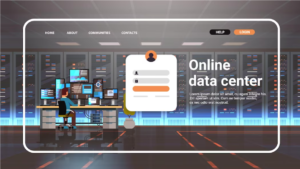VDR vs traditional data rooms in the telecom industry Telecom VDR vs. conventional data rooms In the ever-changing telecom industry, choosing between Virtual Data Rooms (VDRs) and physical data rooms affects productivity, security, and company operations. Telecom professionals may compare, contrast, and weigh their options in the fast-changing digital world with this comprehensive guide. Click here

Some primer information:
Secure Online Data Rooms
The manual processes and restricted access that come with traditional data rooms (physical stores of crucial information) are typically inefficient.
Data exchange and management have been entirely transformed by virtual data rooms (VDRs), digital platforms that provide secure online meeting rooms that can be accessed anywhere in the world.
Traditional Data Rooms: Additional Security Measures
Security in traditional settings relies on physical controls, presenting weaknesses that might undermine secrecy.
Advanced encryption, multi-factor authentication, and restricted access are just some ways virtual data rooms (VDRs) protect your sensitive information.
Welcoming openness and cooperation:
Secure Online Data Rooms
Physical proximity requirements for entering conventional data rooms are a barrier to real-time cooperation and international involvement.
Unlike physical data rooms, Virtual Data Rooms (VDRs) are accessible instantly from any location, foster smooth communication, and improve overall operational agility.
Managing Financial Factors:
Secure Online VDR in the telecom industry
Space, security, and the time spent manually managing documents are only some of the high expenses associated with maintaining a physical data center.
Save money and time with virtual data rooms (VDRs), which can be tailored to meet the requirements of every business thanks to their flexible pricing plans and the lack of physical restrictions.
Manual searching is required for due diligence in conventional settings, which can add time and reduce efficiency.
Virtual data rooms (VDRs) save time and improve efficiency by centralizing and making easily accessible all of an organization’s critical archival and transactional documents for due diligence purposes.

Assessing the Ecological Footprint of ConventionalVDR vs. traditional data rooms in the telecom industry
Using paper amplifies concerns about the environment, electricity, and garbage production in traditional data rooms.
Reduced reliance on paper, lower energy use, and additional eco-friendly options are all ways in which VDRs help the environment.
Making a Definite Decision: Digital solutions are now essential in telecommunications. Virtual data rooms (VDRs) or conventional data rooms (CDRs)? That question is fundamental since the answer affects productivity, safety, and overall competitiveness.
Conclusion:
Virtual Data Rooms are the telecom industry’s digital transformation solution, meeting its dynamic needs. Virtual data rooms (VDRs) improve safety, cooperation, and operating expenses over traditional data storage.
Virtual Data Rooms, the future-ready telecom solution, assist telecom professionals traverse digital complexity. In the changing telecom business, choose the path that promotes your progress, safety, and success.
Physical or virtual data rooms are critical data management decisions for the developing telecom business. Understand their pros and cons to make an informed telecom operating decision.
Comparing Virtual Data Rooms with Conventional Conference Rooms
Secure Online Data Rooms
Conventional data rooms are facilities that house and protect sensitive information, agreements, and other papers. Physical proximity is usually required for access, which might limit distant teamwork.
Secure online services for distributing and collaborating large files and other confidential business documents are known as virtual data rooms (VDRs). Because of their internet availability, they promote cross-cultural cooperation and instantaneous information exchange.
The security of traditional data rooms is based on human monitoring and card-based access control. However, the threat of actual break-ins is still a factor to consider.
Safeguarding sensitive information from hackers is a top priority for virtual data rooms (VDRs), which use many layers of protection to protect confidential documents.
Accessibility and Collaboration: Conventional Data Rooms The accessibility of conventional data rooms is based on one’s physical location, which can cause delays in gaining access to vital information and working with others.
VDRs, or virtual data rooms, allow users to view documents remotely and communicate efficiently from any location.
Think About the Money:
Conventional data rooms need significant financial commitments for renting, security, and ongoing upkeep.
VDRs, or virtual data rooms, are a more economical option since they do away with the need for costly physical data room rentals and provide flexible pricing structures.
Due to laborious document retrieval and management, wing diligence operations in physical rooms might be time-consuming due.
Virtual data rooms (VDRs) save time and improve productivity by centralizing and standardizing access to critical documents before, during, and after an M&A transaction.
Paper use, energy use, and garbage creation are just a few ways that traditional data rooms may hurt the environment.
Virtual data rooms (VDRs): VDRs are consistent with sustainability goals since they eliminate paper use, limit energy use, and promote eco-friendly behaviors.
Choosing Wisely: Adopting digital transformation with VDRs can give you a leg up in the fast-evolving telecommunications industry. Increased safety, better cooperation, lower costs, and less characterize virtual data room usage environmental impact.
While physical data rooms have their uses, the development of the telecom business necessitates the adoption of digital alternatives. Telecom personnel benefit significantly from a Virtual Data Room’s ability to provide a safe, collaborative space for work while also maximizing productivity.
FAQ:
Two main approaches to telecom data management are virtual data rooms (VDRs) and physical data rooms. This FAQ introduces the concept by contrasting VDRs with DDRs.
What is the complete form of VDR in telecom?
Answer: VDR is short for “Virtual Data Room” in telecommunications. It’s a safe online system for handling confidential data and facilitating collaboration.
What is a VDR in networking?
Answer: VDR in networking often refers to a Virtual Data Room, a secure online place where users may communicate, share documents, and manage data in a virtual environment.
What are the benefits of virtual data rooms?
Many organizations have found that using a virtual data room has helped them save time and money while being more environmentally friendly by cutting down on paper documentation.
What is VDR technology?
Virtual Data Room (VDR) technology refers to the hardware and software required to host and operate VDRs. It includes sophisticated encryption, access restrictions, and tools for safe document exchange.
How does the VDR interface work?
Answer: a virtual data room (VDR) interface gives users a safe and simple way to view and manage their documents. Users can easily find what they need, set permissions for specific individuals, and work together in real-time to improve collaboration and communication.
What is the complete form of VDR voltage?
The word “VDR” is not generally associated with voltage in telecommunications. However, in other disciplines, VDR may be Voltage Dependent Resistor, a device whose resistance changes with voltage fluctuations.
To successfully navigate the changing data management landscape in the telecom sector, it is essential to understand how virtual data rooms (VDRs) compare to more conventional data rooms. Pick a strategy that works with your company’s objectives and current infrastructure.
Check out our in-depth manual for additional information about VDRs and their use in the telecommunications industry

